Life Is Funny Lifes a Mess
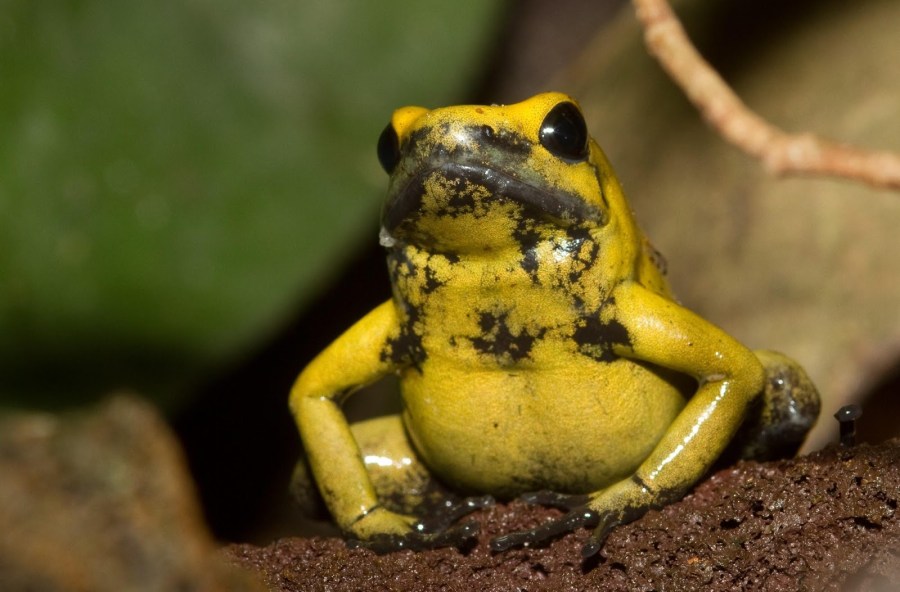
Arachnophobia. Entomophobia. Ophidiophobia. If yous didn't take a fear of spiders, insects or snakes earlier, you volition after learning they're some of the virtually dangerous animals on the planet. Some are isolated, like Komodo dragons, which are found only in Indonesia. Merely others, like the bull shark, are much more widespread. Either way, these animals represent the very deadliest that Mother Nature has to offer.
Greatcoat Buffalo
Weighing anywhere from 600 pounds to well over a ton, the greatcoat buffalo is i of the near dangerous species on the African continent. Their condition at the very height of the food concatenation ways they have few natural enemies, and these unpredictable animals are known to kill or maim hundreds of people every year.
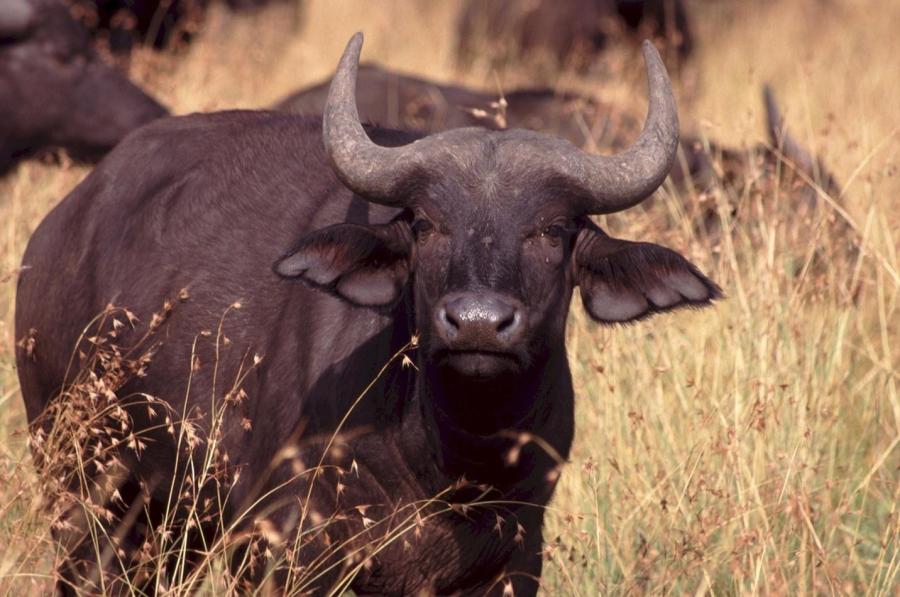
What makes this particular species, also known every bit an African buffalo, so dangerous – and therefore then desirable for bays hunters? Their horns, which fully fuse together at around five or six years of age, are a built-in battering ram, and their massive size and weight can overcome nigh any predator. They're also highly song creatures who volition attack as a herd, overwhelming even the most cunning of animals.
Box Jellyfish
Box jellyfish are beautiful to look at, with their translucent bodies and wispy tentacles gliding through the h2o. Out of the dozens of species of box jellyfish known to homo, most won't harm you if they brush up against you in the h2o, simply there are several whose venom is strong enough to make you sick (or even kill you).

The three most dangerous sub-species of the box jellyfish are the "hub" jellyfish, found mainly in the coastal waters of Japan. the tiny Irukandji, which actively hunt casualty in the waters of northern Australia, and carukia barnesi, another highly venomous Australian jellyfish. Fifty-fifty the smallest corporeality of their venom can cause dizziness, nausea, difficulty animate and trunk pain.
Cone Snail
Look a minute, you're saying snails are dangerous? Well, not all of them; your boilerplate garden variety snail is as harmless as a butterfly. Nosotros're talking cone snails, which refers to a group of venomous, carnivorous and predatory tropical marine snails (too known equally gastropods) that come in all kinds of sizes, shapes and colors.
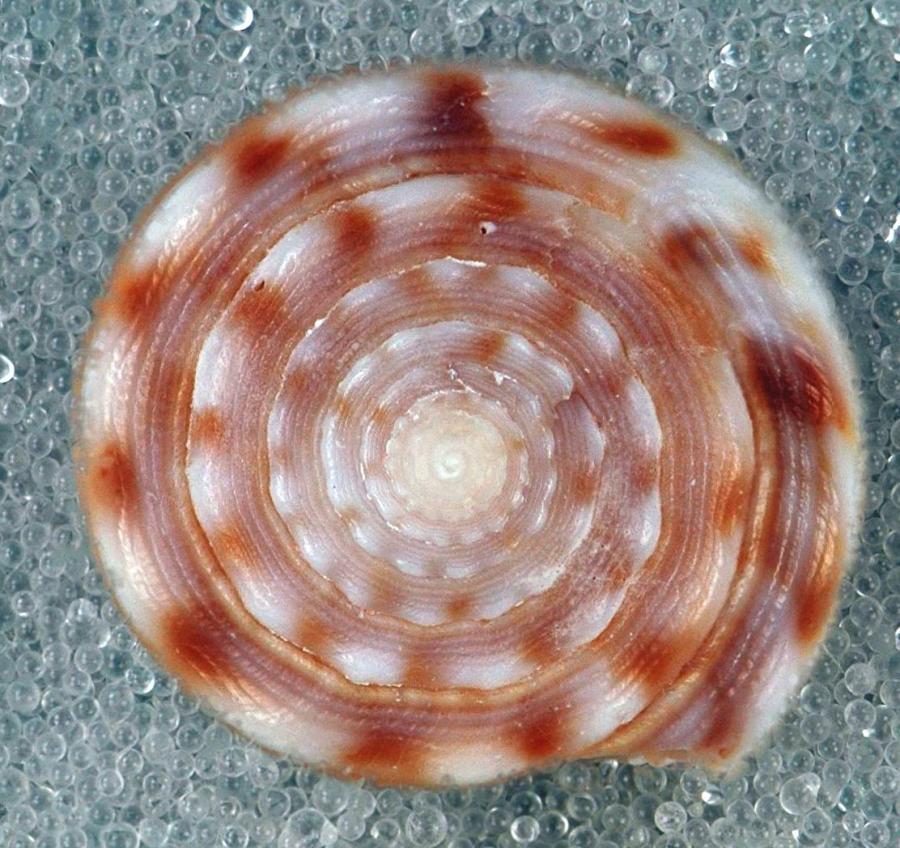
In general, the bigger the cone, the more venomous the snail. The larger ones actually hunt small fish, while smaller snails snack on micro-organisms and all style of aquatic worms. They paralyze their casualty and inject their venom via a needle-similar extension that is barbed to improve take hold of on to their victim. Some venoms are quite mild while others can be fatal.
Pufferfish
Plant by and large in tropical waters, pufferfish have developed a unique natural defense force that helps compensate for how slow they are in the water – they're highly toxic. The level of toxicity can vary from species to species, and even where the poison is held can differ. Scientists have institute venom in the liver, ovaries and fifty-fifty in the skin itself of certain puffers.
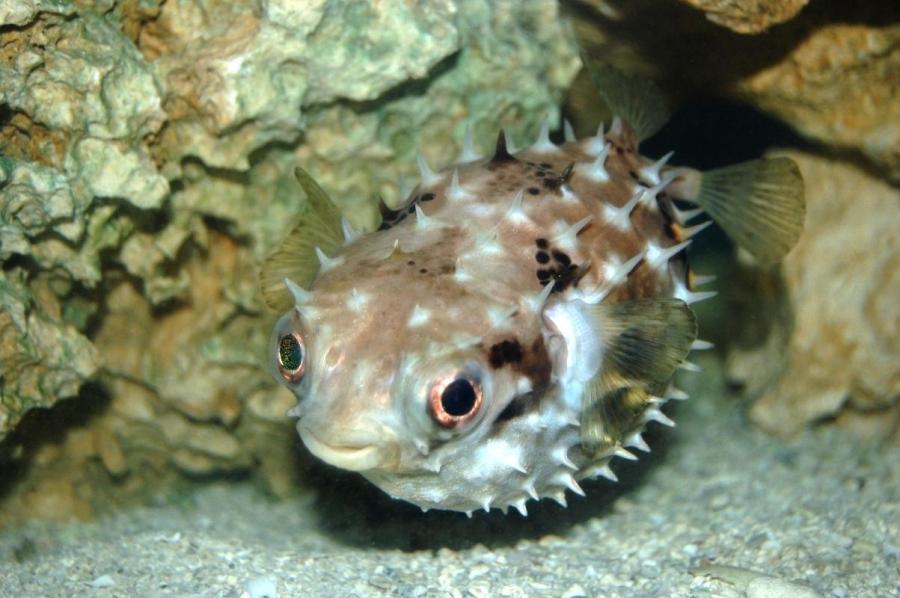
Despite how dangerous it can be eaten, pufferfish is considered a delicacy in Japan and several other countries. It takes a highly trained chef to be able to successful remove the venomous parts of the fish and correctly set up information technology for consumption. Every twelvemonth, there's at to the lowest degree a few deaths due to incorrectly prepared pufferfish.
Aureate Poison Frog
These brightly colored frogs may look all innocent simply hanging out in tropical rainforests, simply their skin is covered in a highly toxic poisonous substance that deadens its victims' nerves and can pb to eye failure and death. Information technology's their natural defense machinery for an environs in which they're at the lower end of the nutrient chain.
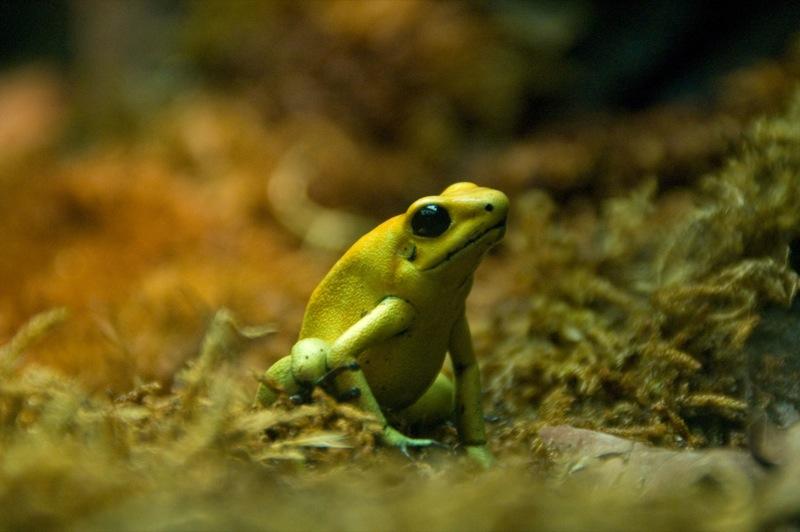
The gilded poisonous substance frog comes in a diverseness of colors, including green and pink, with yellow being the most common. Many indigenous cultures use the concentrated poisonous substance as a hunting weapon, dabbing information technology onto the tips of their spears and arrows. The frogs themselves are immune to it, and chase for prey using their exceptionally long tongues.
Black Mamba
There's a reason assassin Beatrix Kiddo, played by Uma Thurman in Quentin Tarantino's bloody revenge film Kill Bill, goes by the code name "Black Mamba;" she's the deadliest hitwoman on the team. The blackness mamba, which is native to sub-Saharan Africa, is incredibly lethal, second just to the king cobra in terms of size.
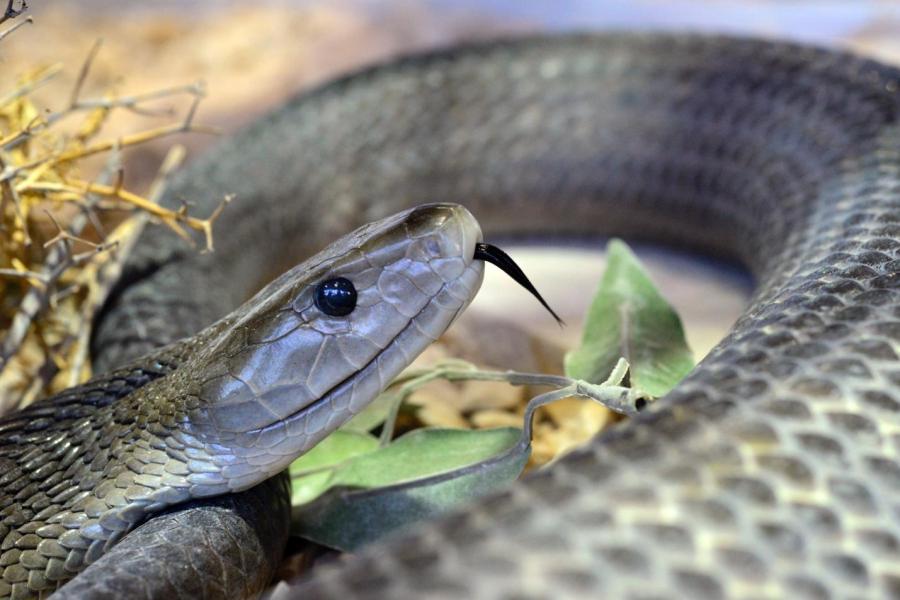
It has few natural predators, and is every bit comfy high up in the copse or gliding across the dry desert floor, where they can accomplish brusk distance speeds upwardly to 10 mph. Their venom is comprised of by and large neurotoxins, which tin induce symptoms like blurred vision, vertigo and respiratory paralysis in equally piddling every bit 10 minutes. One adept affair about the black mamba is that it merely attacks when it feels cornered or threatened, and then be sure to go along your distance.
Musquito
Sure, yous probably recall mosquitos as more abrasive than anything, but these buzzy, claret-sucking insects are actually one of the deadliest creatures on the planet. They kill more than than 700,000 people a year through the spread of infectious diseases similar West Nile virus, dengue fever, malaria and yellow fever.
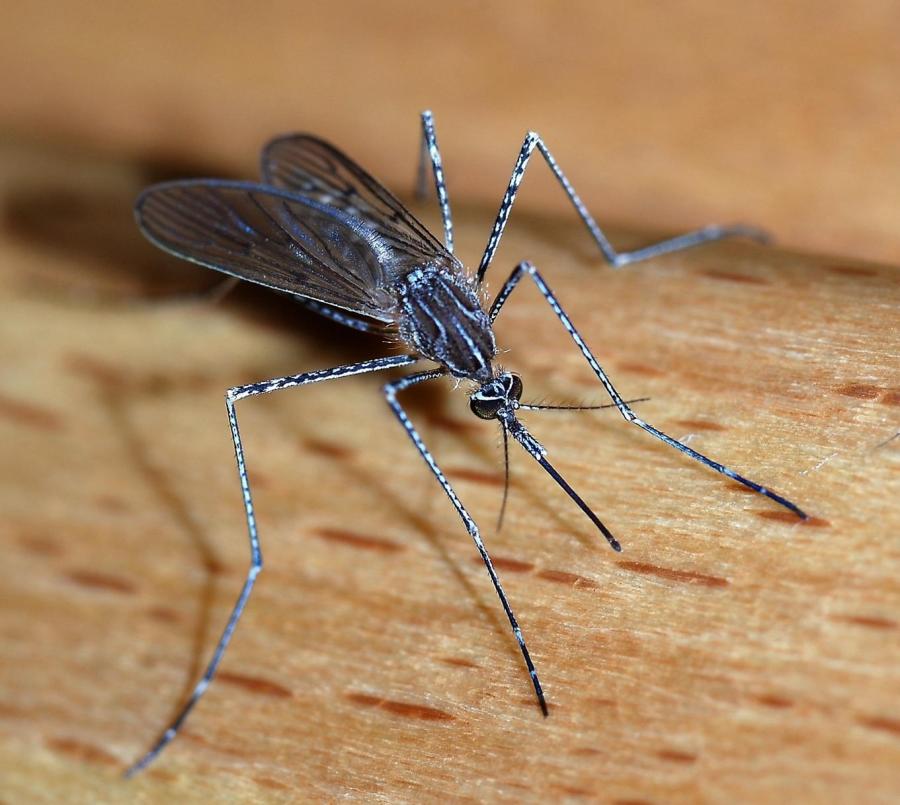
They're especially dangerous in areas where fresh running h2o isn't always bachelor, since the females lay their eggs in stagnant water. And, in add-on to the diseases mosquitoes spread, their saliva can induce an allergic reaction in some people that can range from mild discomfort to severe stupor.
Saltwater Crocodile
The saltwater crocodile is one of the largest crocodiles in the world, and an incredibly dangerous predator that ambushes its prey and swallows it whole. But that hasn't stopped poachers from hunting it. Crocodile skin is highly prized for its commercial value in the manner manufacture, and the meat and eggs are considered delicacies.
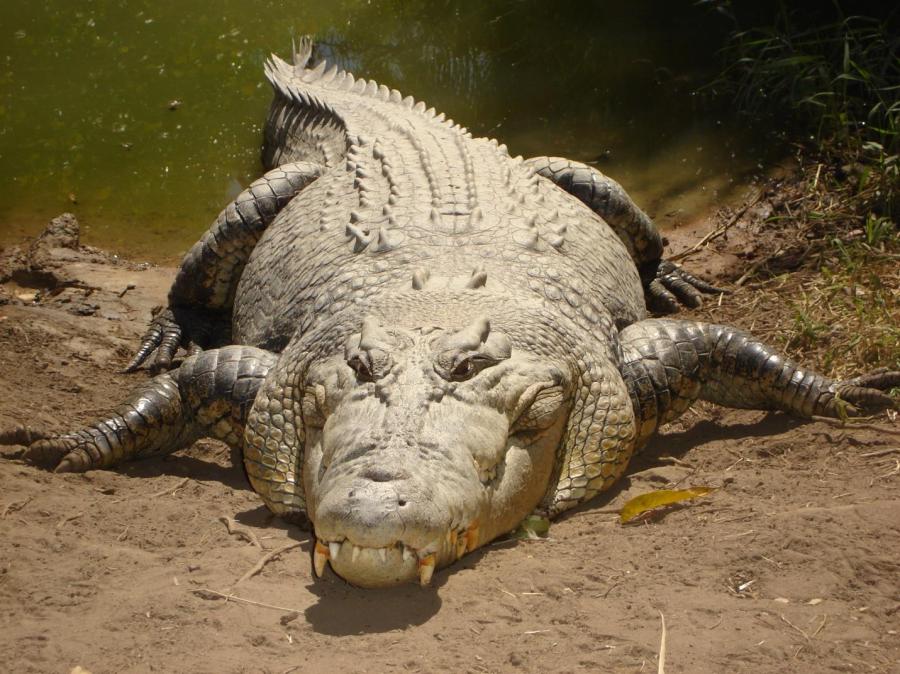
Every bit its name implies, the saltwater crocodile is establish mainly in the salt marshes and wetlands of India's due east coast down through Commonwealth of australia. Males can grow up to 20 feet in length and counterbalance up to ii,300 lbs. In full general, they're about four to five times bigger than female saltwater crocs and are surprisingly agile.
Tsetse Fly
The tsetse wing is similar to the mosquito in that its lethality comes not from the fly itself, but from the highly infectious diseases it spreads – mainly sleeping sickness that affects both humans and animals. It's found predominantly in tropical Africa and is generally divided into three different categories: savannah, wood and riverine.
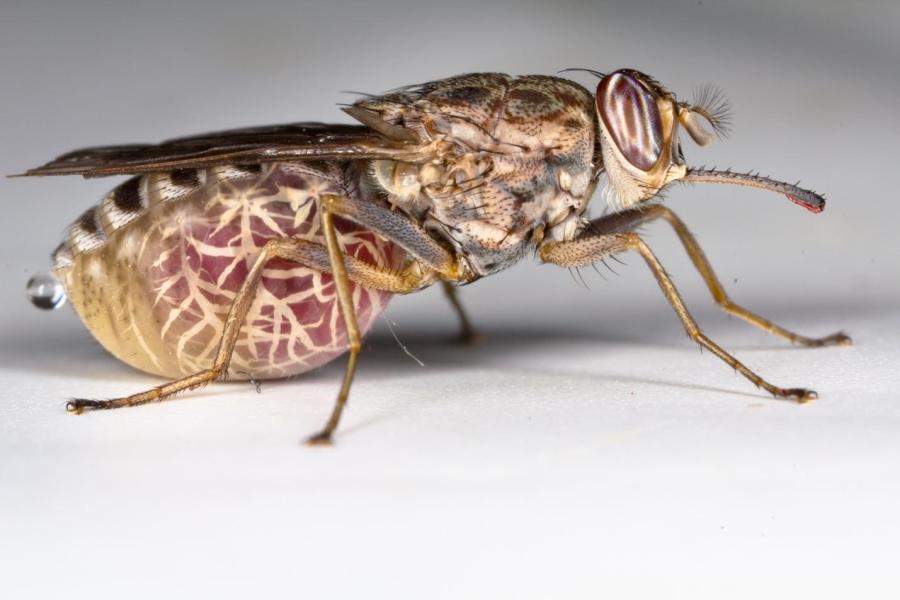
Areas infested with tsetse flies are also doubly affected because they make raising cattle and other livestock virtually impossible, resulting in hunger, famine and full general poverty. Surprisingly, the easiest and most inexpensive way to control the tsetse fly population is with a simple blue tarp; the color confuses the flies and allows them to be collected and killed.
Western Taipan Snake
Unless you're trekking through the outback of eastern Australia, it'south highly unlikely yous'll always come across this ophidian that's considered to be one of the deadliest in the world. Information technology's not even particularly aggressive for a snake, but if it does strike you, better have your affairs in guild. Its venom is the most toxic of any serpent on the planet.

The deadly venom is a mixture of neurotoxins, hemotoxins and diverse other elements that affect numerous parts of the body. Also known as the inland snake, the western taipan is protected past special conservation laws and can be safely observed at several zoos in Australia, Russia and the U.S.
Hippopotamus
The proper noun "hippopotamus" is derived from Greek meaning "river horse," which is non at all what comes to heed when looking at the stout, stocky and altogether awkward hippo – the third-largest country mammal in the world. And though they're generally herbivores and non territorial, their ambitious and unpredictable behavior can be extremely unsafe.
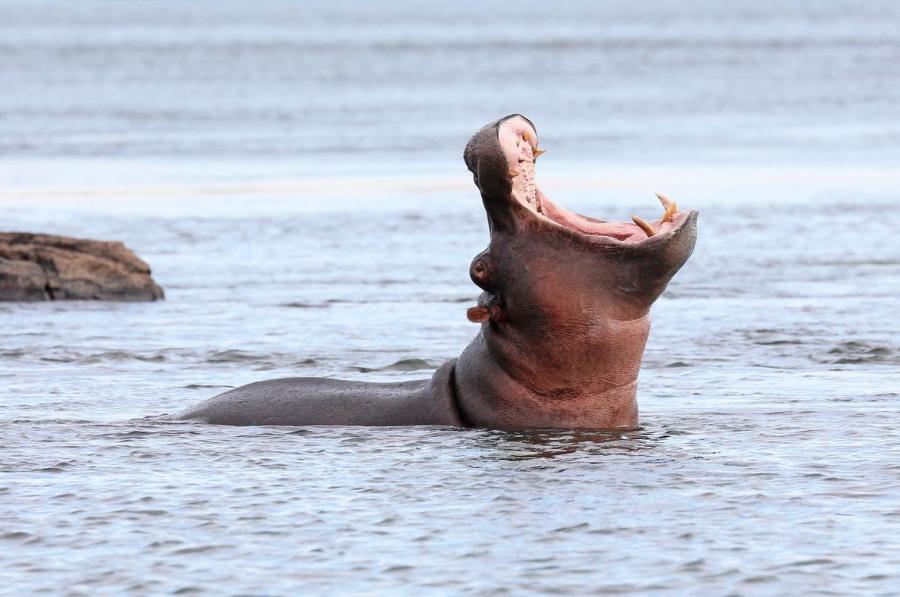
A fully grown male hippo tin weigh up to 3,300 lbs. Even on state, the hippo tin can be surprisingly fast – they can reach top speeds of 19 mph over a short distance. And it's not unheard of for male hippos to set on boats and other small crafts in the rivers and streams of sub-Saharan Africa. They're very territorial, and kill thousands of people every yr.
Balderdash Shark
Despite their small size in comparison to bigger sharks like great whites, the bull shark is among the deadliest known to man. They're incredibly aggressive, quick to attack and chase and swim mainly in shallow, coastal waters, which ways they're much more likely to encounter humans – which doesn't always stop well.
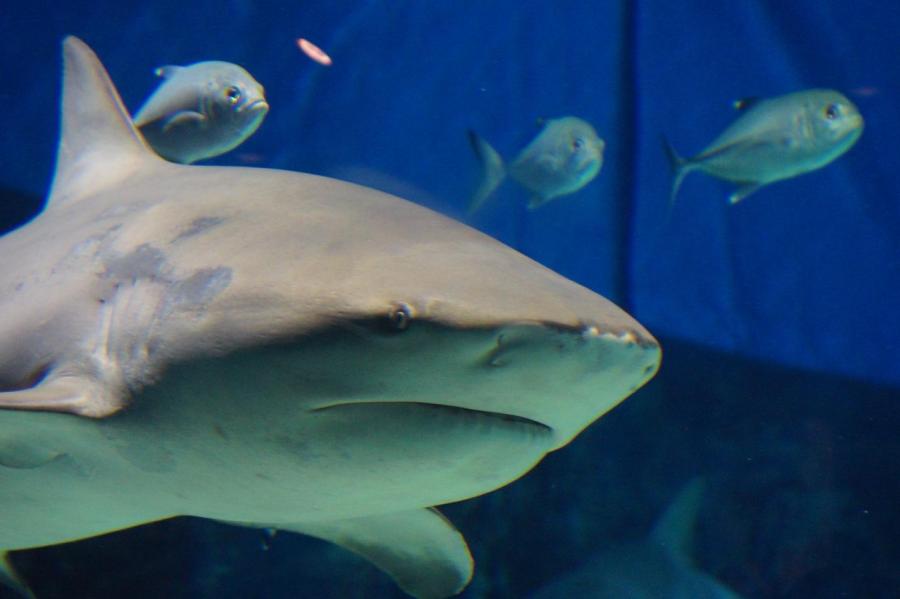
Unlike many other species, female balderdash sharks are generally bigger than the males, and tin top out around viii anxiety in length and weigh 300 lbs. Though they prefer to hunt in the murky shallows of warm coastal waters, they can place bright colors and other nearby objects. Even worse? They're opportunistic feeders and will feed whenever they tin.
Deathstalker Scorpion
Even if you're the kind of person who doesn't usually go freaked out by scorpions, this i is definitely worth panicking over. As well known as the xanthous or Naqab desert scorpion, the Deathstalker is one of the most dangerous scorpions in the world cheers to its highly toxic venom and painful sting.
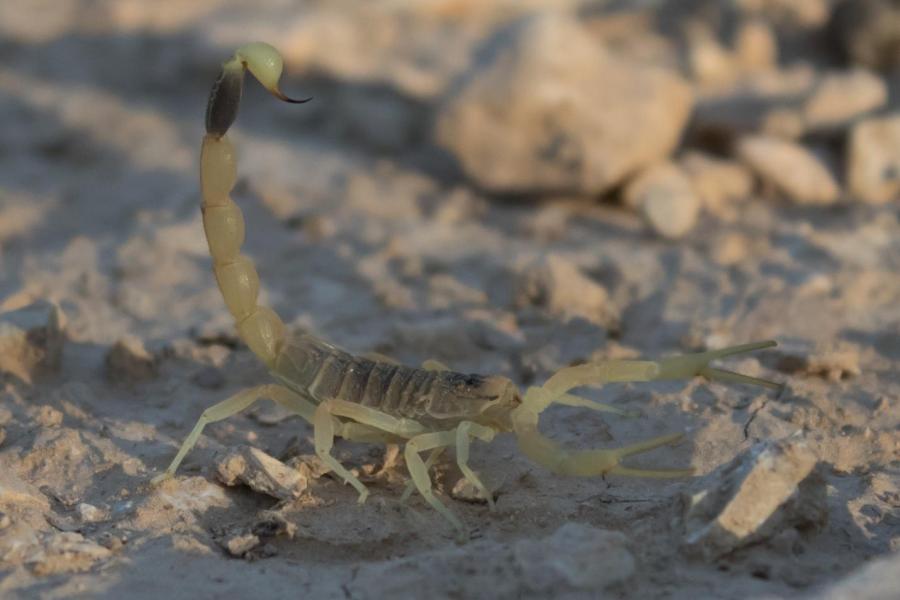
The Deathstalkers preferred habitat is desert and barren shrubland areas that span from the Sahara and Arabian desert through Egypt and Ethiopia. If you lot do happen to get stung, there has been a breakthrough evolution in anti-venom treatments, but (of course) the Deathstalkers venom has been proven to be very resistant.
Great White Shark
It's almost impossible to think of the bully white shark without thinking of Steven Spielberg's "Jaws," which was based on a novel well-nigh a shark that terrorizes a pocket-sized beach community on the 4th of July. Great white sharks beloved to hang out in warm, littoral, offshore waters of places like Mexico, Due south Africa and the U.s. – all places that ensure contact with humans.
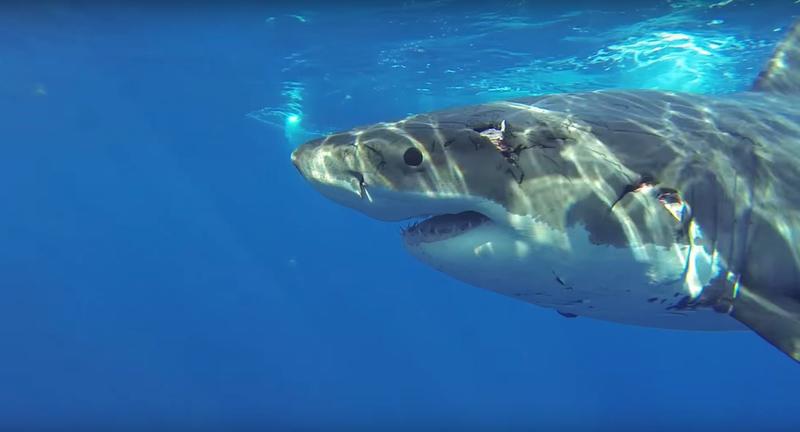
The bang-up white has no natural predators (who'd want to mess with a shark that tin can weigh up to 4,000 pounds?) and hunts everything from fur seals and seabirds to sea lions and other marine animals. In fact, humans aren't a natural prey for great white, but close contact with bully whites can provoke attacks, which number in the hundreds every year.
African Bee
There's a slight misconception in just why the African bee, which is in many ways similar to the boilerplate European bee, is and so dangerous. Scientists have discovered their sting is not much more venomous than the typical bee sting, rather, it'southward aggressiveness with which the bees attack.
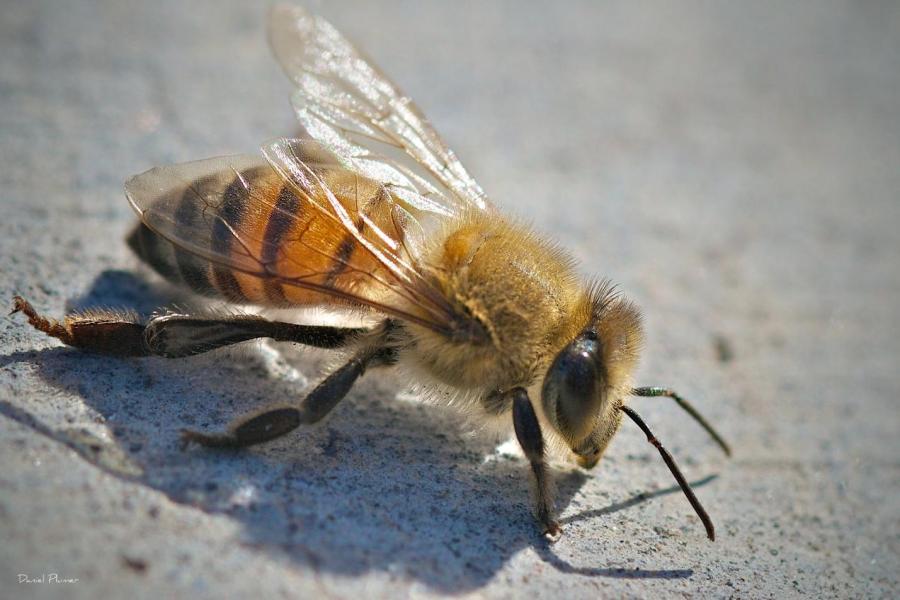
African bee colonies are extremely aggressive and prone to swarming. If they perceive a threat to the hive, they'll send out 3 to four times equally many bees as a European bee colony would. Think of it as quantity over quality. The more than bees there are, the more than opportunity there is for them to sting, and the more than likely it is that the unfortunate victim will suffer maximum damage.
Bullet Pismire
Venomous stinging ants seem like something made up past the writers of a Sci-fi flick, but these nasty niggling guys are all too real. They were discovered in 1775 by a Danish zoologist, and got the nickname "bullet ant" because some victims accept likened the pain of their assail to a gunshot wound.
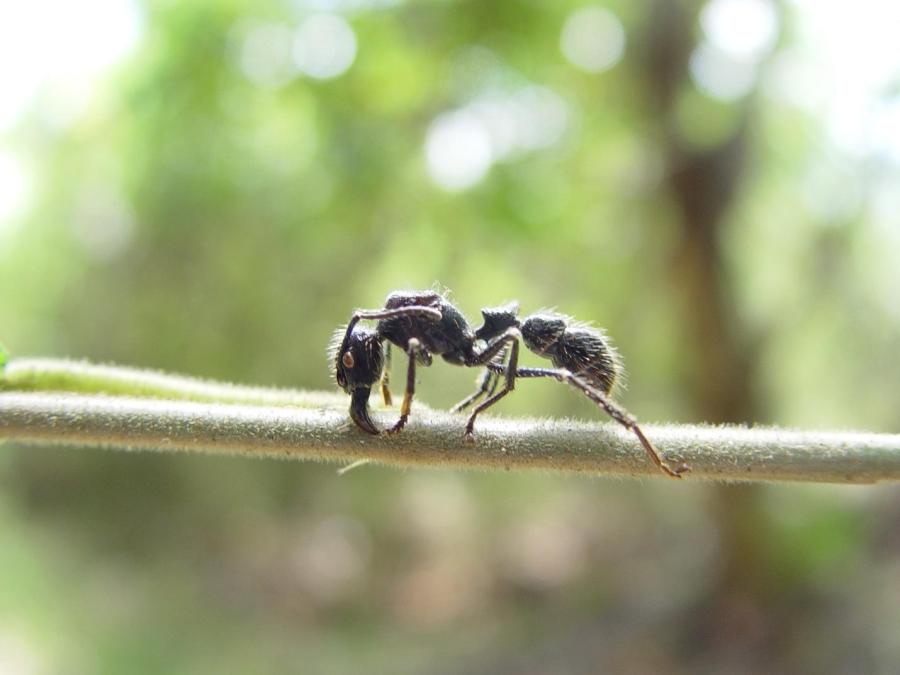
The only good matter about these ants, which live in the tropical rainforests on the eastern side of South America, is that they're not naturally aggressive or territorial. They are foragers, not hunters, and they by and large only set on when defending their nests, which tin can contain upwards to several hundred worker ants, besides equally a queen.
Stonefish
Similar to the pufferfish, the stonefish is a highly toxic marine fish that has nevertheless become a sought-after delicacy throughout Asia and the Indo-Pacific. Information technology delivers its venom through a ridge of fins on its back, which can be easily stepped on or disturbed by swimmers. The worst function? The more pressure that is applied, more venom is released.
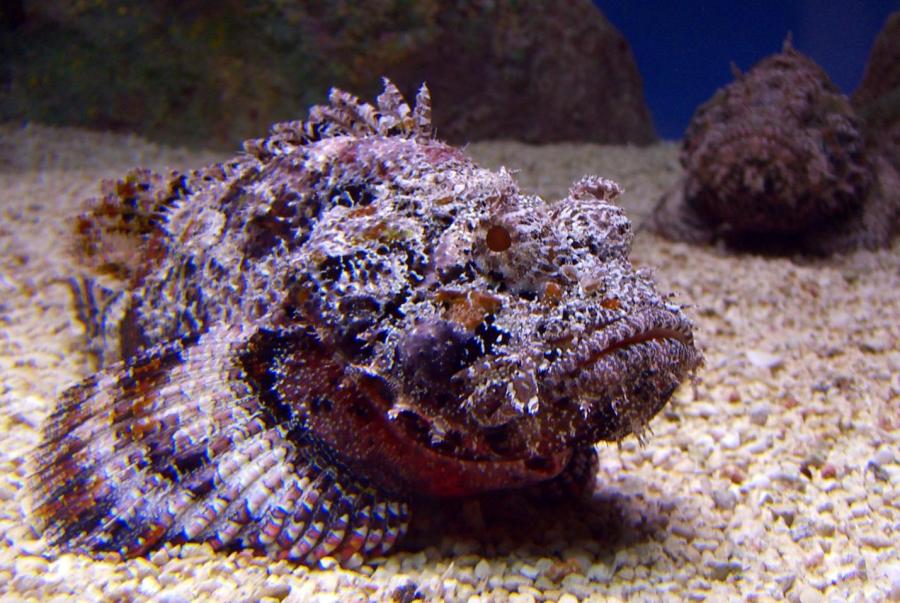
Stonefish stings can be incredibly painful and sometimes lethal. As recently as 2008, more than a dozen non-fatal stings were reported in Queensland, Australia. But in one of nature's ironic twists, stonefish meat is really quite sugariness and mild, and tin can be eaten safely if the venom-packed fin spikes are removed.
Deer
This one may non seem so obvious, but in reality, deer are ane of the most dangerous animals in America. The problem? Humans are encroaching on their natural habitat, and forcing deer populations into close quarters with more than roads and highways, leading to an increase in deer-related auto crashes.
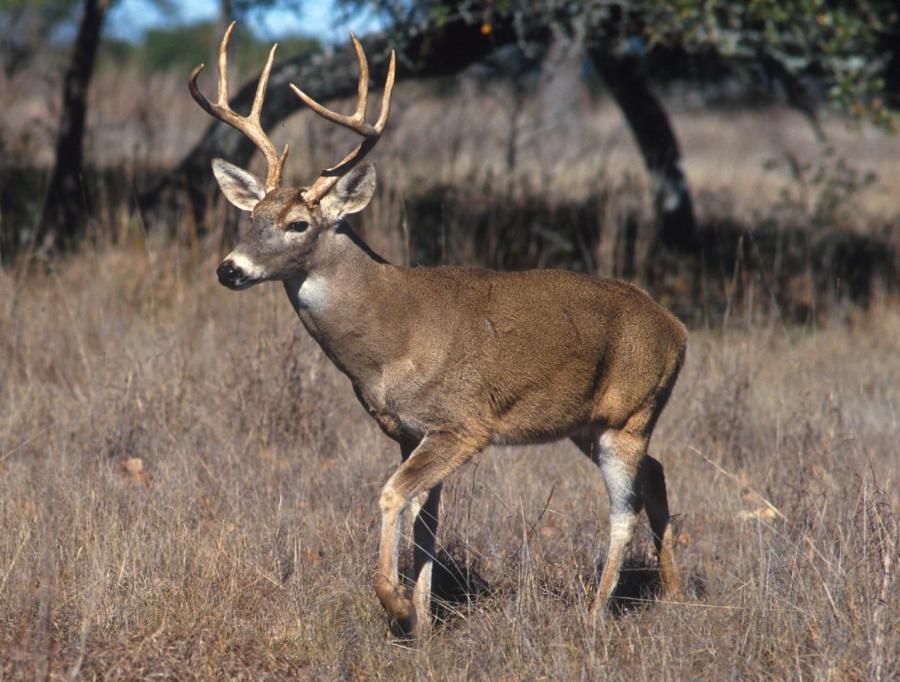
That's why those "deer crossing" signs you see on the side of the road should be taken extremely seriously. (It's besides where the phrase 'deer in the headlights' originated). Information technology's estimated deer-related car accidents kill more than 100 people every year, which is more than dogs, horses, spiders and snakes combined.
African Elephant
The African bush elephant is the largest terrestrial mammal on the planet, and one of the deadliest, too. Their overwhelming size is one factor – fully grown males can stand to 13 feet alpine and weigh over 6.5 tons, while females are generally about one-half as big. Their tusks lone can reach up to eight feet in length.

Elephants are highly intelligent creatures and can exist quick to attack when provoked or threatened by poachers and hunters. In some cases, elephants have been known to continue rampages that kill hundreds of people. And like deer, their natural habitat is shrinking, which makes more such confrontations inevitable.
Spotted Hyena
Humans and hyenas go way back. There are depictions of hyenas in the cave paintings at Chauvet, which appointment dorsum nearly twoscore,000 years. They're famous for being vulture-like scavengers that will eat literally anything, just the spotted hyena is too an aggressive predator that tin (and volition) attack humans.
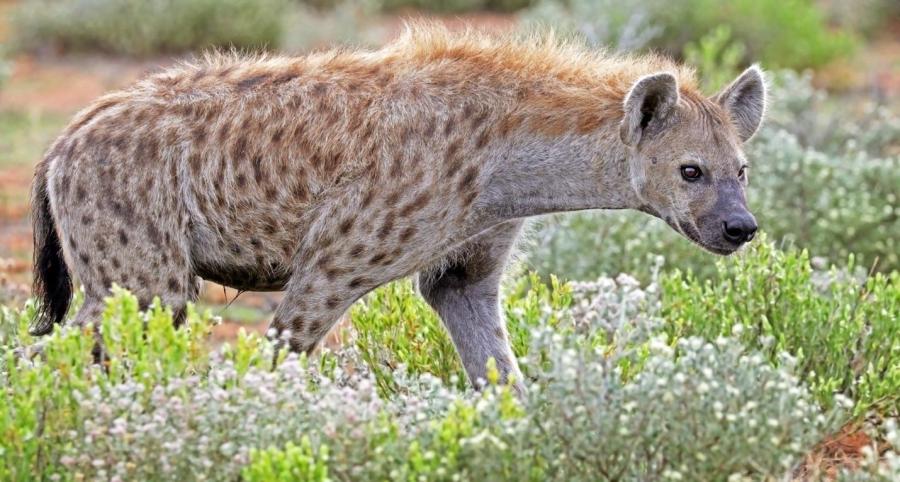
Hyenas are built for power and speed. Males can abound up to five anxiety in length and counterbalance more than than 100 pounds, with powerful jaws and a seize with teeth capable of crushing bones in a matter of seconds. They typically roam in packs, and have been known to set on more frequently at night.
Komodo Dragon
Found exclusively in a handful of Indonesian islands, the Komodo dragon is the largest species of lizard in the world and a deadly predator. They sit at the very summit of the food concatenation, and hunt pretty much anything that walks (and sometimes not – they've also been known to scavenge carrion).
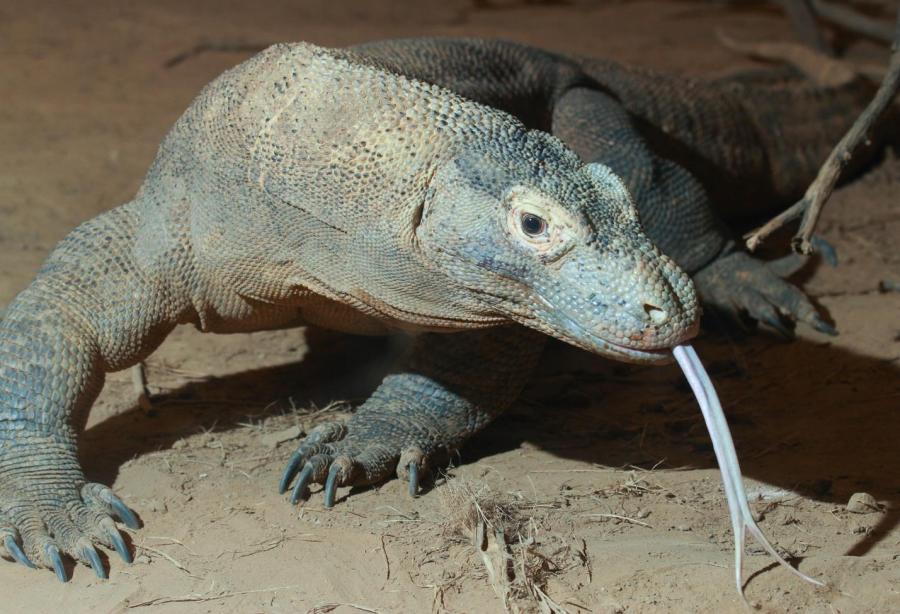
Their enormous size (males tin can grow up to ten feet long and counterbalance over 200 pounds) makes it easy for them to kill their casualty outright. This happens through a combination of the dragon's razor-abrupt slashes and venomous bite that prevents the victim's blood from coagulating. In recent years, they've been put under special conservation status in Indonesia, and fifty-fifty have their own national park.
Boomslang Snake
The boomslang is found but in sub-Saharan Africa and is mostly considered to pose a threat to but the small animals it feeds on. You have to give this highly venomous tree snake a little credit; information technology's a fairly timid species and won't attack anything too big for information technology to swallow or strike unless it'southward provoked.
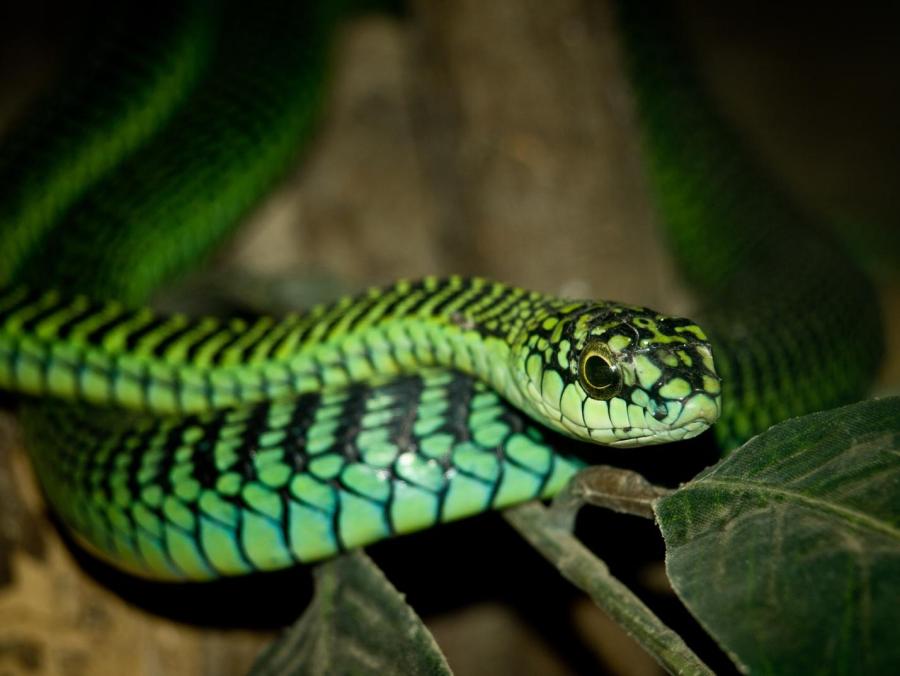
But what makes this snake so lethal is its highly toxic venom, which is designed to stop the victim'due south blood from clotting, leading to massive internal and external bleeding. Also, information technology can open its jaws a terrifying 170 degrees, and has larger-than-usual fangs to ensure a secure seize with teeth. The worst office? Information technology can take hours for symptoms to develop.
Australian Funnel-Spider web Spider
What's scarier than a highly toxic spider? A highly toxic spider whose fangs are powerful plenty to penetrate through fingernails, shoes and other soft materials. Thankfully, the Australian funnel-spider web spider is only constitute on the eastern coast of the island continent, making it highly unlikely you'll ever encounter one.
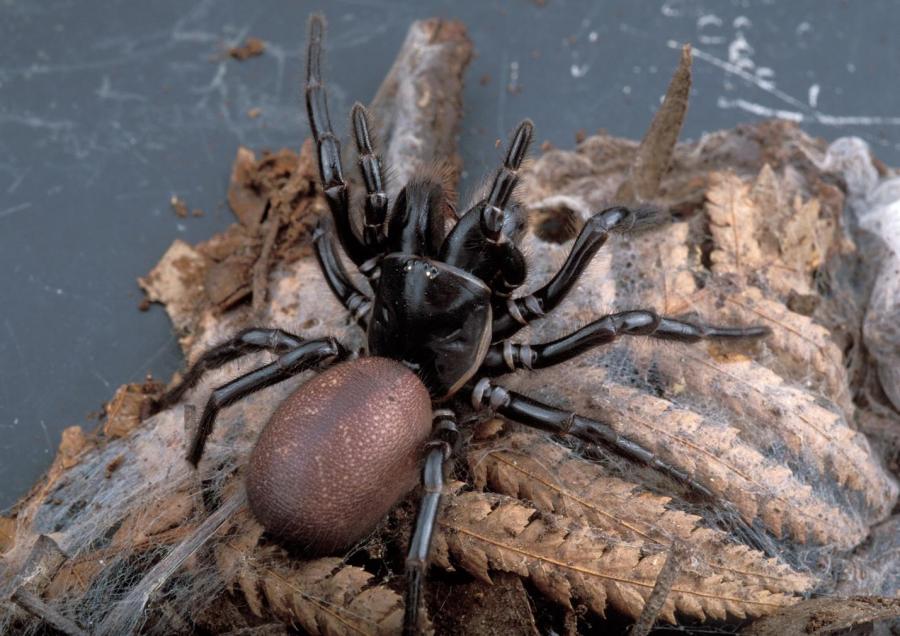
Simply if you did, even the smallest bite should be considered extremely dangerous. The funnel-web spider'southward venom is one of the most lethal in the world and works extremely quickly, producing symptoms ranging from nausea and defoliation to shortness of breath and muscle spasms. And pray that it was a female that bit you; they're generally considered to be less toxic than males.
Blueish-Ringed Octopus
Octopuses are some of the ocean'south strangest creatures, and in the instance of the blueish-ringed octopus, one of the deadliest. Their venom is extremely lethal, containing high doses of compounds that induce nausea, respiratory failure and heart failure. As of now, there is no known anti-venom.
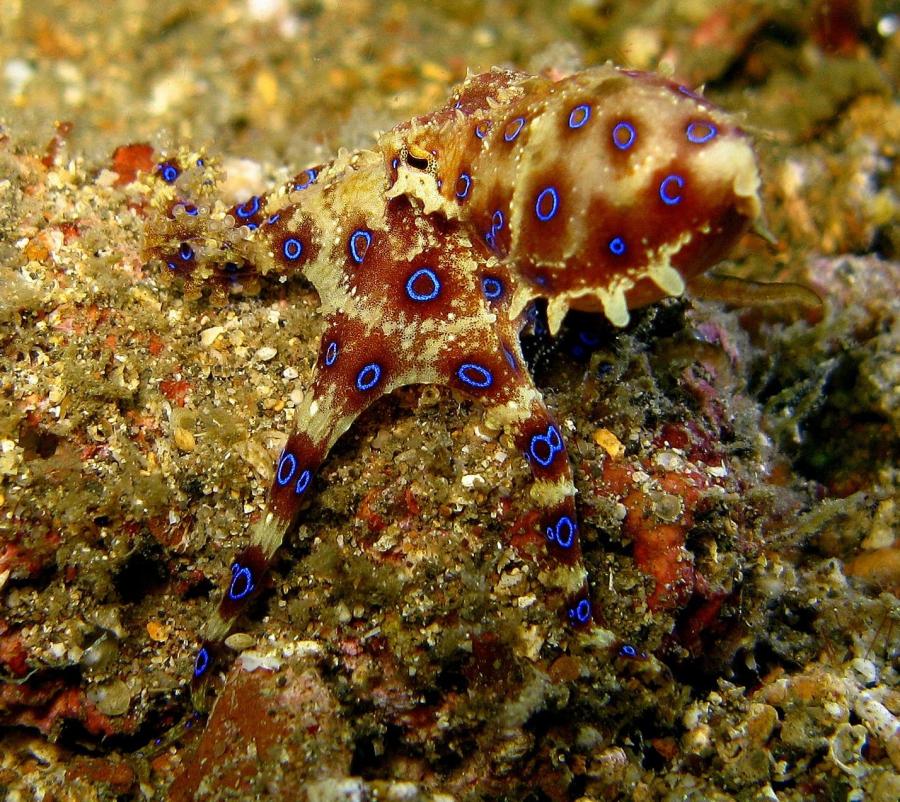
The blue-ringed octopus is small, ordinarily simply about five to viii inches in diameter, and hunts shrimp, crab and other small prey. It spends most of its time hiding from larger predators, merely is quick to attack if provoked, displaying its signature blue-ringed pattern in a highly visible threat display.
Portuguese Human being O'War
Just the mere sight of a single one of these venomous hydrozoa (yep, they're actually non jellyfish) on a embankment can exist enough to warrant closing it to the public. Their tentacles, which can extend for every bit long as thirty feet beneath the surface, sting and paralyze their casualty, but don't worry – for humans, it's more painful than it is deadly.
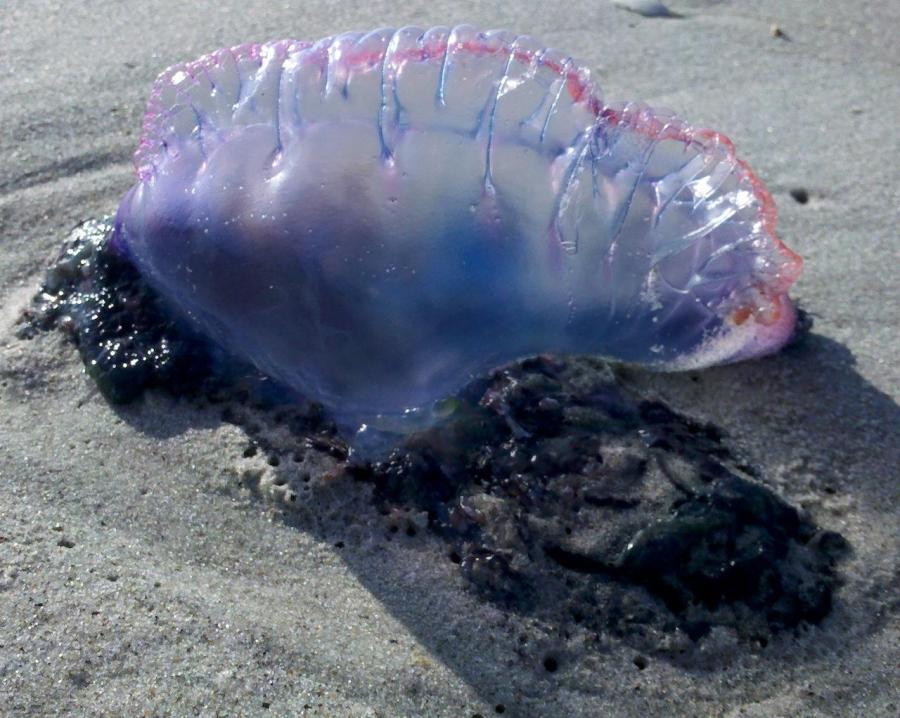
They typically can be constitute in groups of up to 1,000 or more (which is pretty scary, if yous think near it), and attract other animals who feed on the smaller fish that seek shelter among their stinging tendrils. At to the lowest degree they're easy to spot, thanks to the bluish-purple tinged bladder that sits on the sea'southward surface.
Assassinator Bug
The assassin bug lives upwardly to its name with a terrifying method of killing its casualty. Information technology uses its long proboscis to inject a venomous saliva that liquifies the insides of its casualty, making it easier to assimilate. But what makes the assassin problems truly dangerous to humans is the fact that there are some species that feed on blood, making them as deadly as mosquitos.
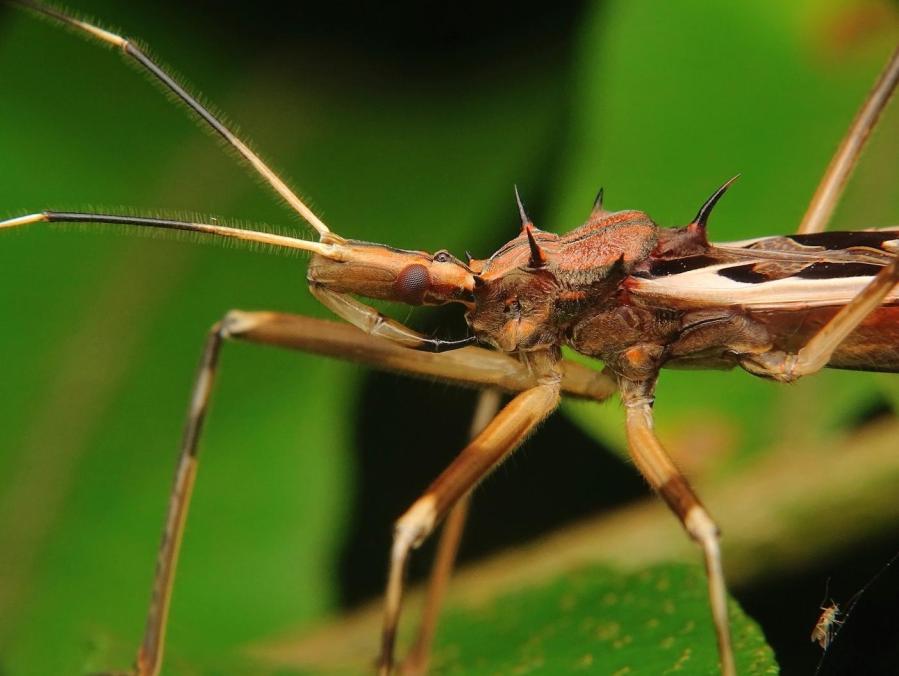
Ane species in detail, the "kissing bug," gets its name from how it bites the soft tissue of the eyes and lips of sleeping humans. Found primarily in Fundamental and South America, these bugs have been known to spread a tropical parasitic illness, Chagas disease, that kills around 12,000 people every yr.
Rhinoceros
These giant herbivores are some of the largest creatures on Earth and are hunted for the very thing that makes them then dangerous – their horns. They're highly coveted by bays hunters and poachers, and are fifty-fifty believed to take medicinal properties in some cultures. Every year, people are gored by black rhinos, who are the virtually aggressive of all.
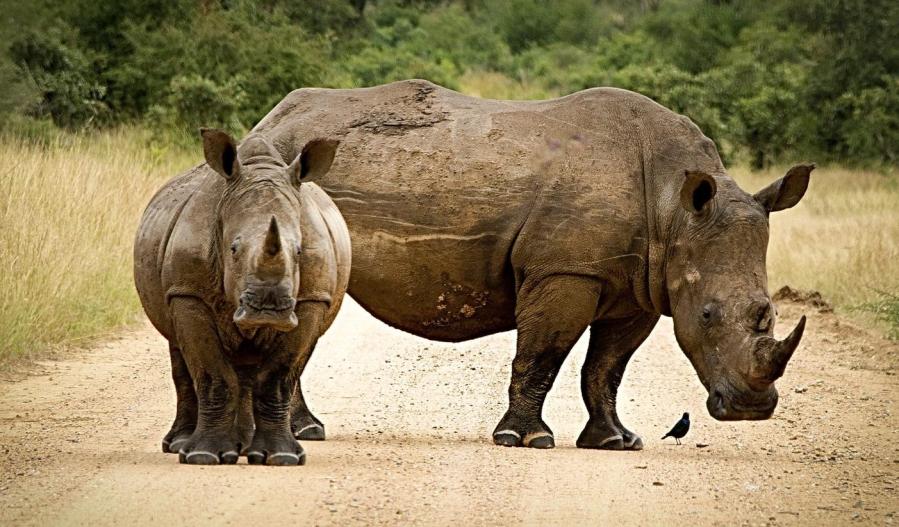
Black rhinos can counterbalance up to 6,000 lbs. and are shockingly agile; in brusk distances over open basis they can reach speeds up to 34 mph. And though poaching and hunting has made them wary of humans, it's nevertheless best to keep a condom distance, lest they perceive a threat.
Leopard
With a top speed of 36 mph and incredible agility and forcefulness, the leopard is a fearsome predator in sub-Saharan Africa and Southeast Asia. They typically stick to hunting wild casualty at night, but have been known to attack sick or injured humans if they are desperate enough, or if their territory is invaded.
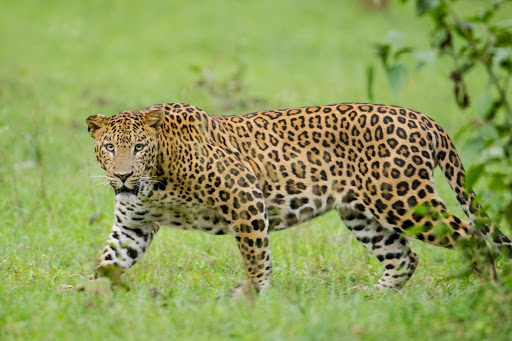
In fact, there are two well-known cases of and then-called "human-eating leopards," both of which occurred in India. The beginning, the Leopard of Rudraprayag, was reported to have killed more than 100 villagers betwixt 1918 and 1926. Panar Leopard, the 2d, was far more mortiferous, killing 400 people in the early 19th century.
Giant Pacific Octopus
Though non nearly as dangerous as the blueish-ringed octopus, the giant pacific octopus is one of the ocean's deadliest predators, eating literally anything it can get its tentacles on; shrimp, lobster, snails – even other octopuses. There have too been reports of Behemothic Pacific octopus attacking small sharks, making this one crafty cephalopod.
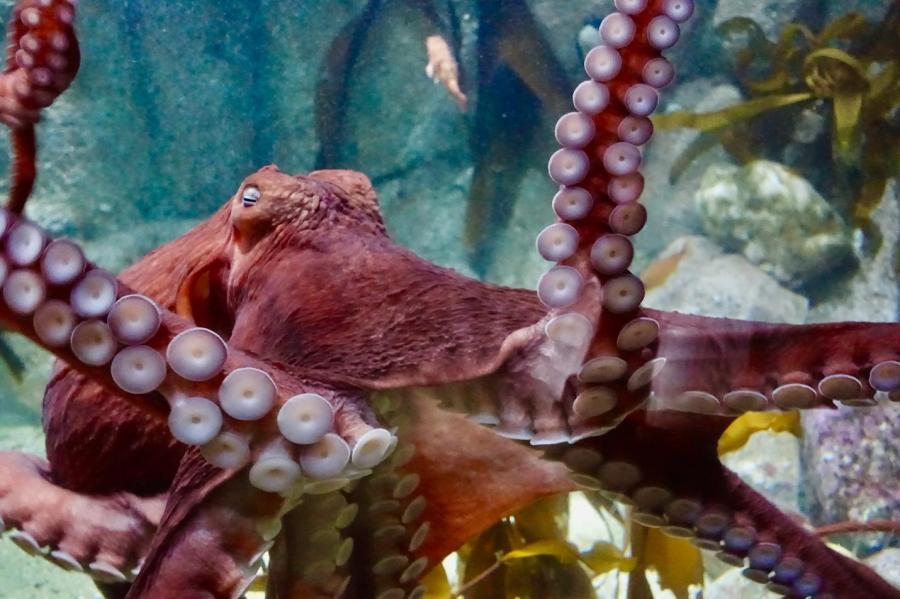
All octopuses contain toxins that paralyze and digest their prey, and the Giant Pacific is no different. It uses its tentacles and compressible body to smother fish and other small marine animals before injecting the toxin, which goes to work immediately. And just how large practice they get? Guinness World Records lists the biggest one at weighing more than 600 lbs. with a reach of around 30 feet.
6-Eyed Sand Spider
A cousin to the highly venomous recluse spider, the six-eyed sand spider is just equally unsafe, though non quite as common. These medium-sized spiders are establish mainly in sandy areas in southern Africa. They get their name from their preferred method of assail – they hibernate their flattened bodies in the shine sand and strike when pocket-sized prey (or a foot) is near.
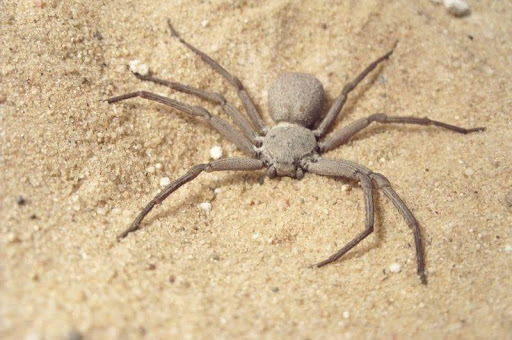
The vi-eyed sand spider contains a highly dangerous venom with necrotic furnishings that can lead to astringent tissue damage, infection and even death. What makes this spider even more scary is that information technology can get up to a year without eating, making information technology one of the most patient killers around.
Source: https://www.ask.com/culture/animals-you-dont-want-to-mess-with?utm_content=params%3Ao%3D740004%26ad%3DdirN%26qo%3DserpIndex
Post a Comment for "Life Is Funny Lifes a Mess"